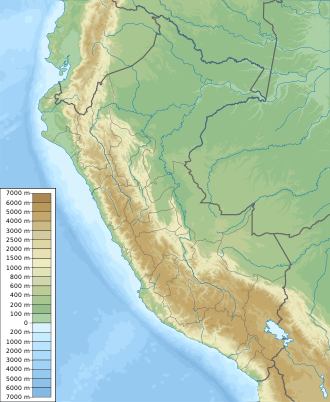| Cordillera Azul National Park | |
|---|---|
 Lake at Cordillera Azul National Park | |
| Location | Peru Loreto, San Martín, Huánuco and Ucayali |
| Nearest city | Tarapoto |
| Coordinates | 7°45′S75°56′W / 7.75°S 75.94°W [1] |
| Area | 1,353,190 hectares (5,224.7 sq mi) |
| Established | May 21, 2001 |
| Governing body | SERNANP |
| Website | Parque Nacional Cordillera Azul |
Cordillera Azul National Park (Spanish : Parque Nacional Cordillera Azul) is a protected area in Peru. [3] It protects part of the Ucayali moist forests ecoregion. [4]
